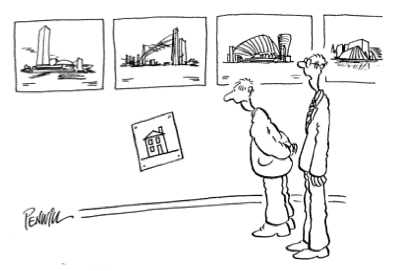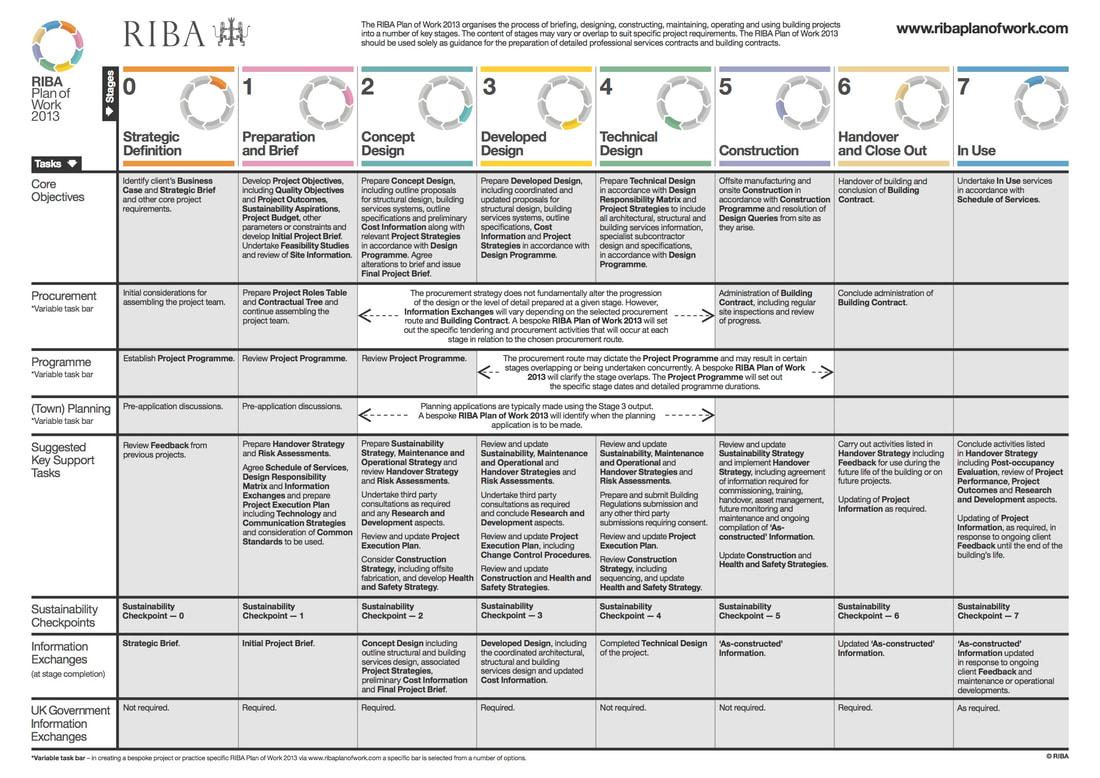|
Why Hire a Registered Architect?
The Architects Registration Board (ARB) regulates the profession. Employing a registered architect will give you confidence in knowing that the individual has been correctly trained, has passed the various stages of architectural education and has the relevant experience to complete projects. Also, that the individual is professionally competent to carry out the role of an architect. The title of ‘Architect’ is protected by law (Architects Act 1997). Legally only persons who’s names are on the Register may use the title of ‘Architect’ in business or in practice and the Architects Registration Board (ARB) is the authority that maintains a Register for Architects. To check if an individual is a registered architect visit - http://architects-register.org.uk/. |
"I thought the job of an architect was to just draw nice buildings?" - Former client |
What do Architects do?
The role of an architect is extremely complex and wide ranging with the physical drawing up of a building only a percentage of the overall job. Training to become a registered Architect takes 7 years including a minimum of 2 years in practice before full qualification and equips an individual to cope with such a demanding industry.
The Architect needs to have familiarity with many areas of activity, from aesthetics to technology, contractual law to environmental psychology, soil mechanics to philosophy, geography to human management, energy conservation and sustainability to interior design. An architect must also have good business acumen and negotiation skills as well as an awareness of current political affairs.
The role of an architect is extremely complex and wide ranging with the physical drawing up of a building only a percentage of the overall job. Training to become a registered Architect takes 7 years including a minimum of 2 years in practice before full qualification and equips an individual to cope with such a demanding industry.
The Architect needs to have familiarity with many areas of activity, from aesthetics to technology, contractual law to environmental psychology, soil mechanics to philosophy, geography to human management, energy conservation and sustainability to interior design. An architect must also have good business acumen and negotiation skills as well as an awareness of current political affairs.
The Benefits of Employing an Architect
1) Adds value in many different ways - As properties are such high value assets having a well designed, well thought out and good quality service and product from the outset saves costs throughout the lifecycle of the building. Whether that is from maximising light and space, adding functionality, or achieving the best return on investment.
2) From confusion to excitement - Architects are highly skilled and professionally trained to turn client’s aspirations into reality.
3) Architects guide the client through the design, planning and construction process whether they are constructing a new building or adapting an existing property.
4) Apply impartial and creative thinking to projects large and small.
5) Create aesthetically pleasing and functional designs tailored to the client’s individual brief.
6) Provides technical drawings and specifications to allow a contractor to competitively price the building work, more so than if limited or no drawings were present. These technical drawings also formulate the basis of a contractual agreement between the client and contractor.
1) Adds value in many different ways - As properties are such high value assets having a well designed, well thought out and good quality service and product from the outset saves costs throughout the lifecycle of the building. Whether that is from maximising light and space, adding functionality, or achieving the best return on investment.
2) From confusion to excitement - Architects are highly skilled and professionally trained to turn client’s aspirations into reality.
3) Architects guide the client through the design, planning and construction process whether they are constructing a new building or adapting an existing property.
4) Apply impartial and creative thinking to projects large and small.
5) Create aesthetically pleasing and functional designs tailored to the client’s individual brief.
6) Provides technical drawings and specifications to allow a contractor to competitively price the building work, more so than if limited or no drawings were present. These technical drawings also formulate the basis of a contractual agreement between the client and contractor.
|
The Architects Appointment
When an architect is selected to commission a project a written agreement will be drafted and signed between the client and the architect. There are a number of standard contracts providing protection for both parties involved. See below an example of the RIBA Domestic Professional Services Contract 2018 which can be used for residential clients. https://www.architecture.com/knowledge-and-resources/resources-landing-page/riba-domestic-professional-services-contract-2018 (Note: This information is for consultation purposes only and a contract should be drafted for each individual project and signed by both parties before work commences). |
| ||||||
RIBA Plan of Work
First developed in 1963, the RIBA Plan of Work is the definitive UK model for the building design and construction process. Architects will be able to guide you through the process and take you through each Plan of Work stage for your individual project.
https://www.ribaplanofwork.com
First developed in 1963, the RIBA Plan of Work is the definitive UK model for the building design and construction process. Architects will be able to guide you through the process and take you through each Plan of Work stage for your individual project.
https://www.ribaplanofwork.com
Contact us: 07810794436
|
Copyright ©2024 Whitfield:Design
We use cookies to ensure we give you the best experience on our website. If you continue, we'll assume that you are happy to receive all cookies on the Whitfield:Design website. Please see our Privacy Policy: https://www.whitfield-design.co.uk/privacy.html |


